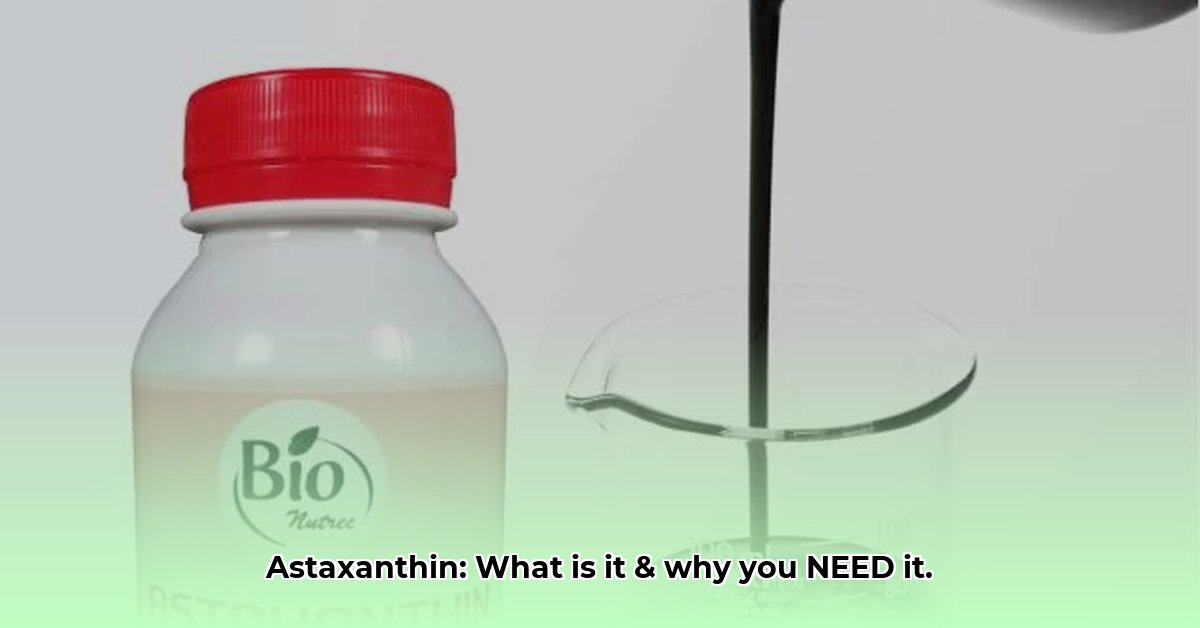Astaxanthin, a naturally occurring reddish pigment, offers a wealth of potential health benefits. Found in sources like salmon, krill, and algae, this powerful antioxidant may contribute to healthier skin, sharper vision, and improved physical performance. This comprehensive guide explores the science behind astaxanthin, its potential uses, recommended dosage, and important precautions.
Decoding the Power of Astaxanthin
Astaxanthin, a carotenoid similar to beta-carotene, is a potent antioxidant that may protect cells from damage caused by free radicals. While naturally present in certain marine organisms and fish like salmon, giving them their vibrant pink hue, supplemental forms are also available. This guide delves into the potential benefits and applications of astaxanthin, addressing the common query, “astaxantina para que sirve?”
Exploring the Potential Benefits of Astaxanthin
Astaxanthin’s antioxidant properties may offer a wide range of health benefits. While research is ongoing, current evidence suggests several promising areas:
- Skin Health: Astaxanthin may protect against sun damage, improve skin elasticity, and potentially reduce wrinkles.
- Eye Health: It may help prevent or delay age-related macular degeneration, cataracts, and eye strain.
- Heart Health: Astaxanthin may improve blood flow, lower blood pressure, and reduce the risk of heart disease.
- Joint Health: It may decrease inflammation and pain in joints.
- Immune System Support: Astaxanthin may strengthen the immune system and enhance its response to threats.
- Athletic Performance: It may reduce muscle damage, lessen fatigue, and improve recovery after exercise.
- Cognitive Function: Astaxanthin may protect against cognitive decline and improve memory and reaction time.
Astaxanthin in Action: How It Works
Astaxanthin’s primary mechanism of action lies in its potent antioxidant capacity. It neutralizes free radicals, unstable molecules that can damage cells and contribute to aging and various health issues. By protecting cells from oxidative stress, astaxanthin may support overall health and well-being. Ongoing research is exploring additional mechanisms by which astaxanthin might exert its effects.
Incorporating Astaxanthin into Your Routine
Dosage and Administration
While natural food sources provide some astaxanthin, supplementation is often preferred for higher doses. Typical dosages range from 4 to 12 mg daily. Consult a healthcare professional for personalized recommendations, especially if you are pregnant, breastfeeding, or have underlying health conditions.
Choosing a Quality Supplement
When selecting an astaxanthin supplement, prioritize reputable brands that conduct third-party testing to ensure purity and potency. Look for certifications like GMP (Good Manufacturing Practices) for added assurance.
Astaxanthin: Dosage and Safety Considerations
Determining the Right Dosage
Astaxanthin dosage varies depending on individual needs and health goals. A typical daily dose is 4-12 mg. Higher doses may be used short-term under medical supervision. For long-term use, 8-12 mg daily is generally recommended.
Potential Side Effects
Astaxanthin is generally safe, but potential side effects include reddish stool and minor stomach discomfort. Pregnant or breastfeeding individuals should consult a doctor before use.
Interactions
Astaxanthin may interact with certain medications, particularly those metabolized by the liver. Consult your doctor if you are taking any other medications.
Quality Control
Choose astaxanthin supplements from reputable brands that perform third-party testing to ensure quality and purity.
Sourcing High-Quality Astaxanthin
The Power of Algae
Haematococcus pluvialis algae is the richest source of astaxanthin. Supplements derived from this algae offer the highest concentration and are generally preferred. AstaReal® is a trusted and well-researched brand of astaxanthin from this source.
Finding the Right Supplement
- Dosage: Start with 4 mg daily and adjust as needed, generally staying within the 4-12 mg range.
- Form: Choose a convenient form like softgels, capsules, or gummies.
- Brand Reputation: Select reputable brands committed to quality, such as Double Wood Supplements, BioAstin (Nutrex Hawaii), Sports Research, or Doctor’s Best.
- Third-Party Testing: Look for GMP certification and independent lab testing to ensure purity and potency.
| Brand | Typical Dosage (mg) | Certifications | Notes |
|---|---|---|---|
| Double Wood Supplements | 4-12 | GMP | Focus on ingredient quality |
| Nutrex Hawaii (BioAstin) | 4-12 | GMP | Uses AstaReal® astaxanthin |
| Sports Research | 4-12 | GMP | Offers various astaxanthin formulations |
| Doctor’s Best | 4-12 | GMP | Known for science-backed formulations |
Ongoing Research and Future Directions
Research on astaxanthin is ongoing and continues to explore its numerous potential benefits. Future studies may reveal new applications and refine current understanding of its mechanisms of action.
Disclaimer
This information is for educational purposes only and does not constitute medical advice. Consult a healthcare professional before starting any new supplement, especially if you are pregnant, breastfeeding, or have any underlying health conditions. The FDA has not evaluated these statements, and astaxanthin is not intended to diagnose, treat, cure, or prevent any disease.
- Bento Box Stackable Lunch Solutions For Organized Daily Meals - December 31, 2025
- Stacked Bento Box Design Keeps Your Meals Organized and Fresh - December 30, 2025
- Stacking Bento Organizes Your Meals for Convenient On-the-Go Eating - December 29, 2025










